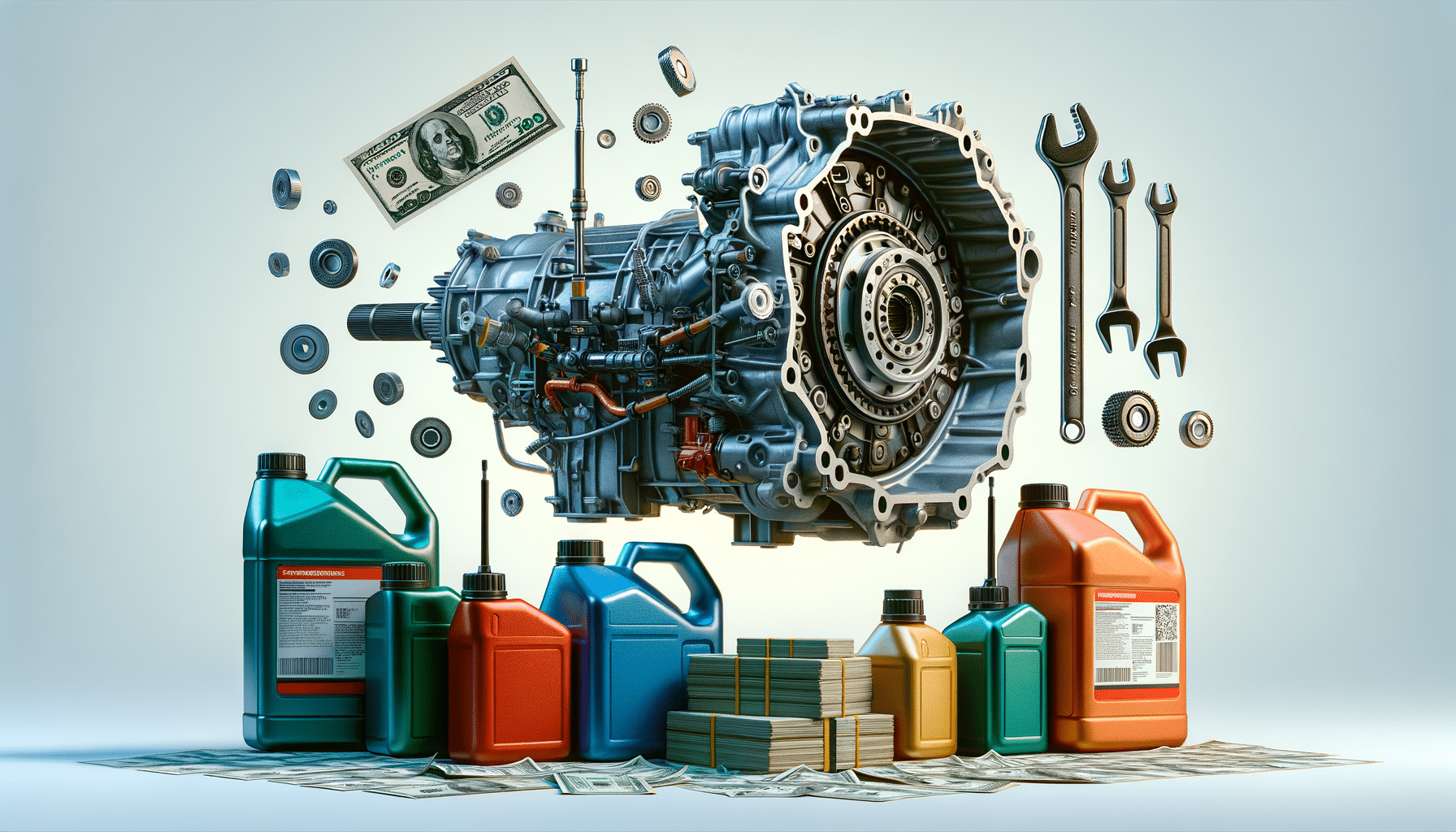
When to Replace Your Transmission – Key Signs & Costs
Understanding Transmission Replacement Costs
Transmission replacement is a significant expense for vehicle owners, often necessitated by severe wear and tear or a complete failure. The cost of replacing a transmission can vary widely depending on several factors, including the make and model of the vehicle, the type of transmission, and the labor rates in your area. On average, you might expect to pay anywhere from $1,800 to $3,400 for a transmission replacement. This range can increase if your vehicle requires a specialized or high-performance transmission.
Several components contribute to the overall cost of transmission replacement. These include the cost of the new or rebuilt transmission itself, labor costs, and any additional parts that might need replacing during the process. It’s also important to consider the potential cost savings of rebuilding a transmission instead of replacing it entirely. A rebuild might cost less, typically ranging from $1,100 to $2,800, but this option depends on the extent of the damage and the availability of parts.
When considering whether to replace or rebuild a transmission, it’s crucial to weigh the long-term benefits. A new transmission may offer a longer lifespan and a warranty, providing peace of mind and potentially better performance. However, if you’re planning to keep your vehicle for only a short time, a rebuild might be a more economical choice.
Importance of Regular Transmission Fluid Changes
Transmission fluid plays a vital role in keeping your vehicle’s transmission running smoothly. It acts as a lubricant for the moving parts within the transmission and helps to cool the transmission, preventing overheating. Regular transmission fluid changes are essential to maintain the health of your transmission and can prevent costly repairs or replacements down the line.
Most manufacturers recommend changing the transmission fluid every 30,000 to 60,000 miles, although this can vary based on your vehicle’s make and model. Driving habits and conditions also play a significant role in determining how often you should change the fluid. For example, if you frequently tow heavy loads or drive in stop-and-go traffic, you might need to change the fluid more often.
Neglecting regular transmission fluid changes can lead to a build-up of debris and contaminants, which can cause the transmission to slip or overheat. Over time, this can lead to significant damage, resulting in the need for a costly transmission replacement. By keeping up with fluid changes, you can extend the life of your transmission and ensure your vehicle operates efficiently.
Transmission Fluid Replacement: A Key Maintenance Task
Transmission fluid replacement is a critical maintenance task that should not be overlooked. Unlike a simple fluid change, a complete fluid replacement involves draining the old fluid, cleaning the transmission system, and refilling it with new fluid. This process ensures that all contaminants and old fluid are removed, providing a fresh start for your transmission.
Performing a transmission fluid replacement can improve your vehicle’s performance by ensuring that the transmission operates smoothly and efficiently. It can also prevent overheating, which is a common cause of transmission failure. Additionally, replacing the fluid can help identify potential issues early, such as leaks or worn-out components, allowing for timely repairs.
While some vehicle owners might attempt to replace the transmission fluid themselves, it is often recommended to have this service performed by a professional. This ensures that the job is done correctly and that any underlying issues are addressed promptly. By investing in regular transmission fluid replacement, you can avoid the high costs associated with transmission repairs and replacements.
Signs It’s Time to Replace Your Transmission
Recognizing the signs that your transmission may need replacement is crucial in preventing further damage and ensuring your vehicle’s safety. Some common indicators include unusual noises, such as grinding or whining, particularly when shifting gears. These sounds often suggest that the transmission components are not functioning correctly and may be on the verge of failure.
Another sign to watch for is slipping gears, where the transmission unexpectedly changes gears or has difficulty staying in gear. This can lead to a loss of power and control, posing a significant safety risk. Delayed or rough shifting is also a red flag, indicating that the transmission is struggling to engage the correct gear.
Fluid leaks are another critical warning sign. If you notice a puddle of red or brown fluid under your vehicle, it could indicate a transmission fluid leak. Low fluid levels can cause the transmission to overheat and fail, so it’s essential to address any leaks promptly. By paying attention to these warning signs, you can take action before a minor issue becomes a major problem, potentially saving you from the high costs of transmission replacement.
Maintenance Tips to Extend Transmission Life
Proper maintenance is key to extending the lifespan of your vehicle’s transmission and avoiding costly replacements. One of the simplest yet most effective maintenance tasks is to regularly check the transmission fluid level and condition. Ensure the fluid is at the correct level and free from contaminants. If you notice the fluid is dark or has a burnt smell, it’s time for a change.
Driving habits also play a significant role in transmission longevity. Avoid aggressive driving, such as rapid acceleration and hard braking, which can put unnecessary strain on the transmission. Additionally, if you often tow heavy loads, consider installing an auxiliary transmission cooler to prevent overheating.
Regular vehicle inspections can help identify potential transmission issues early. During these inspections, pay attention to any unusual sounds or changes in vehicle performance. Addressing these issues promptly can prevent them from developing into more serious problems.
By following these maintenance tips and staying vigilant about your vehicle’s performance, you can extend the life of your transmission, ensuring a smoother and more reliable driving experience.


